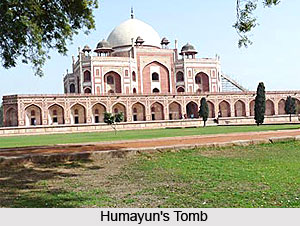 Mughal architecture in Delhi can significantly be subdivided from the rulers beginning with Akbar and ending in Aurangzeb, after which, the later Mughals were indeed quite insignificant enough to be noted as memorable architects and contributors to Indo-Islamic architecture under the Mughals in Delhi. As a starting line, architecture in Delhi during Akbar stands as a brilliant example in the form of Humayun`s Tomb, which was the first gigantic planning, which was ever grounded by any Mughal in India, that too to such extant merit! During Akbar`s early years as an emperor, he was not too much involved into beautifying Delhi under his canopy; rather Akbar is legendary to have assayed an extremely religious role, with a tremendous spiritual bent of mind and devoting his time towards spending time in gaining knowledge about the Allah. However, Mughal architecture in Delhi under Akbar does not require any further criticism, what with the building of Humayun`s Tomb, an excellent surviving char bagh construction, thoroughly embracing Timurid and Persian concepts from their ancestors. Prior to Akbar`s arrival onto the scene of Delhi`s architecture, his influential foster guardians had indeed taken control of the place and its religious builds in the form of mosques and dargahs.
Mughal architecture in Delhi can significantly be subdivided from the rulers beginning with Akbar and ending in Aurangzeb, after which, the later Mughals were indeed quite insignificant enough to be noted as memorable architects and contributors to Indo-Islamic architecture under the Mughals in Delhi. As a starting line, architecture in Delhi during Akbar stands as a brilliant example in the form of Humayun`s Tomb, which was the first gigantic planning, which was ever grounded by any Mughal in India, that too to such extant merit! During Akbar`s early years as an emperor, he was not too much involved into beautifying Delhi under his canopy; rather Akbar is legendary to have assayed an extremely religious role, with a tremendous spiritual bent of mind and devoting his time towards spending time in gaining knowledge about the Allah. However, Mughal architecture in Delhi under Akbar does not require any further criticism, what with the building of Humayun`s Tomb, an excellent surviving char bagh construction, thoroughly embracing Timurid and Persian concepts from their ancestors. Prior to Akbar`s arrival onto the scene of Delhi`s architecture, his influential foster guardians had indeed taken control of the place and its religious builds in the form of mosques and dargahs.
Mughal architecture in Delhi was later taken over by Akbar`s able and hugely aesthetic son, emperor Jahangir and his somewhat oscillating tendency towards architecture of Delhi as a capital and his pursuit of poetry and artistic associations. Architecture in Delhi during Jahangir was principally based upon constructing tombs and mausoleums, brilliant instances of sub-imperial patronage of Jahangir`s nobility, who had stayed back in the Mughal court since his father`s times. These tombs do bear much similarity with Humayun`s Tomb in plan and construction. However, Jahangir and his contribution towards Mughal architecture in Delhi were meritoriously based in refurbishing and restoring the legendary and venerated tomb of Nizam ud-Din and its additional embellishments. With advancement of times and epochs, Jahangir also was proud to hand over his ruling baton onto his son and her to Mughal throne, Shah Jahan. Shah Jahan and his prowess in architecture was such that the Mughal realm had never previously witnessed, not even under Akbar. Shah Jahan perhaps needs no further introduction of his architecture potential, what with instance like the New Seventh Wonder of the World, the Taj Mahal.
Architecture of Delhi during Shah Jahan is grounded in an idyllic manner in the conception, planning and establishing the city of Shahjahanabad, the future and present-day area of Old Delhi and its every detailed religious and fortress construction. Shahjahanabad and its coiffed chiselling stands as sparkling and radiant instances to Mughal architecture in Delhi, with the Red Fort, its umpteen interior edifices and the nearby Jama Masjid. The dargah of Nizam ud-Din also was additionally re-furnished and reconstructed by his imperially patronaged nobles, adding looming and colossal builds to Delhi`s Mughal architecture. Beyond that, however, much is not known and acknowledged in present times about Shah Jahan and his contribution to Delhi and its Mughal improvements, due to his adherence to shift his capital to Agra and reside there for later years, when Aurangzeb already had seized the limelight from his father, a sensing of vaulting ambition.
Architecture of Delhi during Aurangzeb was a sort of follow up to Shah Jahan`s already well established Mughal architecture in Delhi, precisely within the gates of Shahjahanabad. Much happenings however did not occur beyond the peripheries of the walled city, with his sub-imperial patronage taking control of Delhi`s architecture and `Mughal-ish` construction. Due to sufferings of major fires, several mansions were erected, with pleasure gardens also taking up the validity and important enlistments. Tombs, mosques, madrasdas were erected however, to Aurangzeb`s consent within the walled Shahjahanabad. The primary reason for such absence of Aurangzeb`s contribution to Mughal architecture of Delhi might be the fact that Agra was taking up his time, with the emperor already beginning to demonstrate signs of declination and deprivation, primarily to jealous and resentful desires.






































